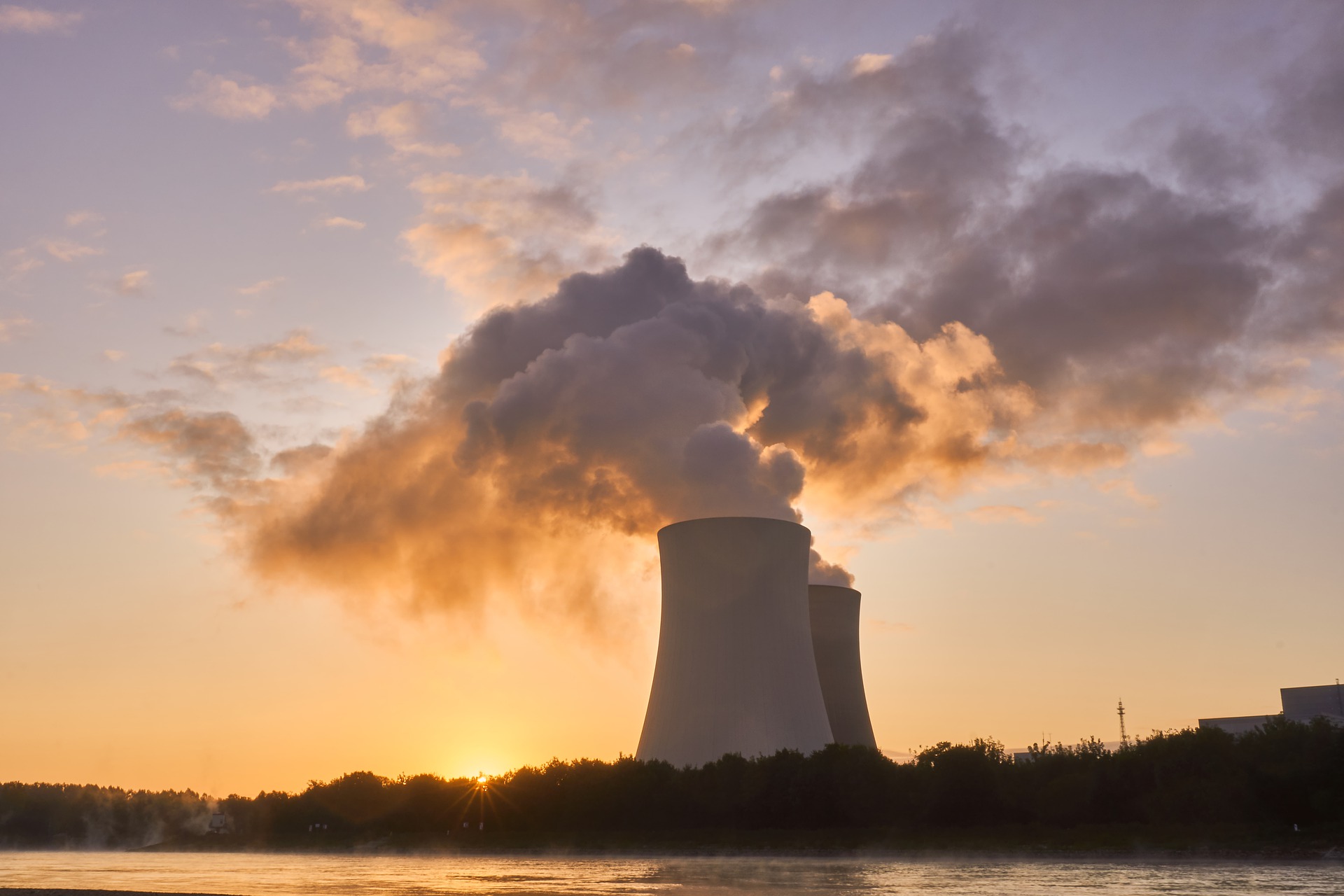
NASA wants to put a nuclear power plant on the moon by 2030. Is nuclear energy really the answer to clean, environmentally friendly energy?
There are many questions regarding the nuclear plant topic that should be addressed. This argument can be very confusing for many different reasons…how does nuclear energy impact the environment? Are there any advantages to using nuclear energy?. Today we will address this huge topic considering different aspects of Nuclear power plants (NPP) in order to build a “small” general analysis about the advantage and disadvantages of this type of practice. At first, how NPP works as an environmentally friendly energy. After, we will see the effect of radioactive debris on the marine environment focusing on Caesium-137 isotope as a radionucleotide which can negatively affect the Earth’s environments.
HOW DO NUCLEAR POWER PLANTS WORK?
Power plants are used to produce energy. A nuclear power plant is a specific system that uses a nuclear chain reaction (NCR – nuclear fission) to produce electricity; 11% of the total yields of electricity is provided by nuclear power. Nuclear power plants are based on a nuclear chain reaction. NCR is a self-sustaining reaction based on the spontaneous series of fission events (neutrons fission); a target nucleus absorbs a neutron and fissions, releasing additional neutrons and fission products. Fission can occur when a nucleus of a heavy atom captures a neutron, or it can happen spontaneously. Every 2 or 3 neutrons released, only one must be allowed to strike another nucleus: if less the reaction dies, if more than 2 or 3 it will grow uncontrolled (an atomic explosion).
The released neutron travels at speeds of about 10 million meters per second – 3% the speed of light.
Specific systems are used to avoid atomic explosions (such as moderators like heavy water, ordinary water, etc..). The reaction becomes self-sustaining when the number of neutrons released in a given time equals or exceeds the number of neutrons lost by absorption in non-fissionable material (uranium nucleus) or by escape from the system. If each neutron releases 2 more neutrons, then the number of fissions doubles each generation. The reaction occurs in the centre of the reactor of an NPP, which contains nuclear fuel.
NUCLEAR SPECIES
There are different isotopes that are used in Nuclear chain reactions called “nuclear species”:
- Uranium-238 (the most common);
- Uranium-235 (0.7% ff natural uranium with a higher fission probability);
- Plutonium-239 (has a very high spontaneous fission rate);
This is the process controlled by a Nuclear power plant (or uncontrolled in nuclear weapons) and used as a source of energy. When these reactions occur, high levels of thermal energy are released and used as electricity. Both fission and neutron emission are processes that also happen within stars. The creation of heavy elements (such as silver or gold), can depend on these processes’ properties of exotic nuclei. Recent studies discovered that nuclear properties played a vital role in the neutron-star merger event using gravitational-wave and electromagnetic observatories.
NCS AS A SOURCE OF ENERGY
Steam is the product of thermal reactions used to spin large turbines that generate electricity. Nuclear power plants use the heat produced during nuclear fission to heat water. The energy released to heat the water, produce steam that turns the blades of a steam turbine driving generators that make electricity. The “cooling tower” (a separate structure at the power plant) cools the steam back into water and the process repeats itself to produce other steam.
Since 1990, NPP had produced 20% of the total yields of energy in the U.S.
Source: U.S. Energy Information Administration, “International Energy Statistics”, as of March 24, 2021
The office of Nuclear Energy declares 3 reasons why nuclear is clean and sustainable:
- Nuclear energy protects air quality: is a zero-emission clean energy source;
- Nuclear energy’s land footprint is small: it produces more electricity on less land than any other clean-air source;
- Nuclear energy produces minimal waste: Nuclear fuel is extremely dense and can be reprocessed and recycled;
Ok, but why nuclear energy on the moon?
Nowadays, we know that NASA is planning to put a nuclear power plant on the moon by 2030 with the aim to help sustain future missions on the Moon or Mars. Exploration of the Moon and Mars requires human technology and especially the power of electricity. According to Nancy Smith Kilkenny from NASA’s Glenn Research Center, we should use nuclear energy because:
- It’s reliable. Fission systems can operate continuously around the clock in shadowy craters and during the weeks-long lunar nights, when power generation from sunlight is difficult.
- It’s powerful. The systems NASA is asking companies to design would provide at least 40 kilowatts of power, enough to continuously power 30 households for ten years.
- It can be compact and lightweight. Systems like these could someday provide enough power to establish an outpost on Mars.
“Plentiful energy will be key to future space exploration”
Jim Reuter, associate administrator for NASA’s Space Technology Mission Directorate (STMD).
BIOACCUMULATION OF CAESIUM-137 ISOTOPE (137CS)
Despite the huge possibilities bring by nuclear energy, have been strongly proved the negative effects on the marine environment caused by all nuclear power sources. Caesium-137 is one of the main products of nuclear reactors and weapons testing as the long-lived component of radioactive fallout. 137Cs usually occurs as a crystalline powder, rather than in its pure liquid form; its liquid nature is the reason why is particularly interesting for marine environments. A high magnitude of 137Cs can have several consequences: can increase the risk for cancer (such as thyroidal cancer), cause burns or acute radiation sickness. Caesium isotope can be accumulated into soft tissue through a process called “bioaccumulation”. Scientists, through radioecological studies, started to analyze the use of this isotope to address its biokinetics in marine organisms and applied the data to biomonitoring investigations.
The world’s oceans and seas are only slightly contaminated by anthropogenic radionuclides with negligible radiological impact on the world population. The deep-sea is the largest, continuous ecological unit on earth; here we have the majority of contaminants. There is a lack of clarity about impacts on oceans due to the fact that has been approached related to isolated local phenomena; without the comprehensive contest of the ocean processes.
Results show that 137Cs was the most abundant radionucleotides found in sweater and biota (fish and shellfish); these data were used to estimate the global situation for the FAO fishing areas, considering the bioaccumulation of radionucleotides in seafood. Data concerning 137Cs in the oceans seem to be quite reliable (Livingston et al., 2000).
FUTURE PROSPECTIVE
Is nuclear energy really the answer to clean, environmentally friendly energy?
There are still many discussions on the use of nuclear energy. At this time, we only know that there are endless possibilities related to the exploitation of this energy but also that we need to deal with “the dark side” of the human footprint.
Sources:
- Energy education – https://energyeducation.ca/encyclopedia/Nuclear_power_plant;
- Livingston D. Hugh, Pavel P. Povinec “Anthropogenic marine radioactivity” International Atomic Energy Agency, Marine Environment Laboratory, MC-98012, Monaco;
- NASA – SERVI Solar System Exploration Research – https://sservi.nasa.gov/articles/a-lunar-nuclear-reactor/;
- Office of Nuclear Energy – https://www.energy.gov/ne/articles/3-reasons-why-nuclear-clean-and-sustainable#:~:text=Nuclear%20is%20a%20zero%2Demission,uranium%20atoms%20to%20produce%20energy.&text=According%20to%20the%20Nuclear%20Energy,carbon%20dioxide%20emissions%20in%202019;
- Robison L. William and Victor E. Noshkin “Radionuclide characterization and associated dose from long-lived radionuclides in close-in fallout delivered to the marine environment at Bikini and Enewetak atolls” Lawrence Livermore National Laboratory (LLNL), Livermore, California USA;
- Robison W. L., Hamilton T. F. (2009) “Radiation doses for Marshall Islands Atolls Affected by U.S. Nuclear Testing: All Exposure Pathways, Remedial Measures, and Environmental Loss of 137Cs”;
- U.S. Energy Information Administration – https://www.eia.gov/energyexplained/nuclear/nuclear-power-plants.php#:~:text=Nuclear%20power%20comes%20from%20nuclear,form%20smaller%20atoms%2C%20releasing%20energy;
- World Nuclear Association – http://www.world-nuclear.org/;
Images:
- Fig. 1 – https://img.lemde.fr/2020/08/24/0/0/4928/3280/1328/0/45/0/c1262f2_535269037-Centrale-nucl-aire-de-Chooz-Ardennes.jpg; Photo by: FRANCOIS LO PRESTI / AFP
Author: Marta Riva



